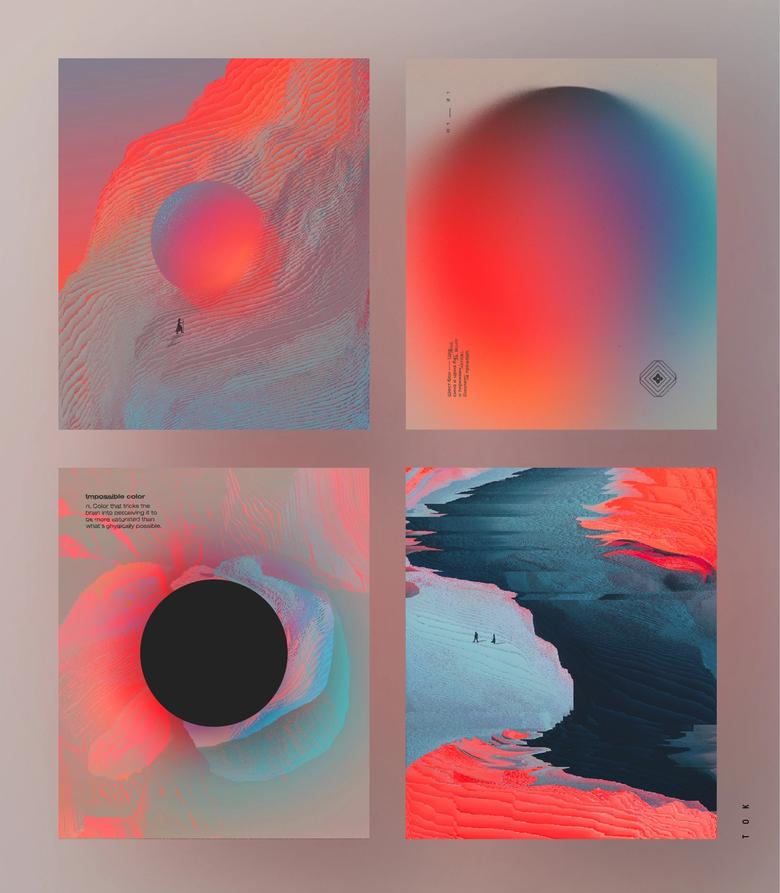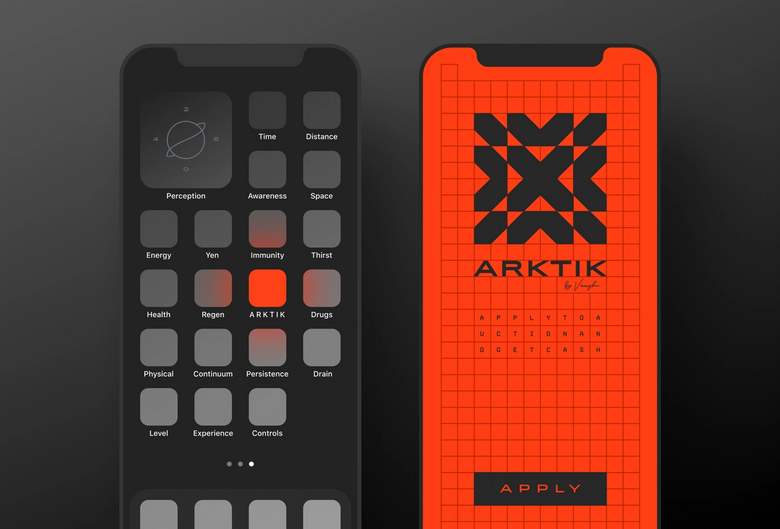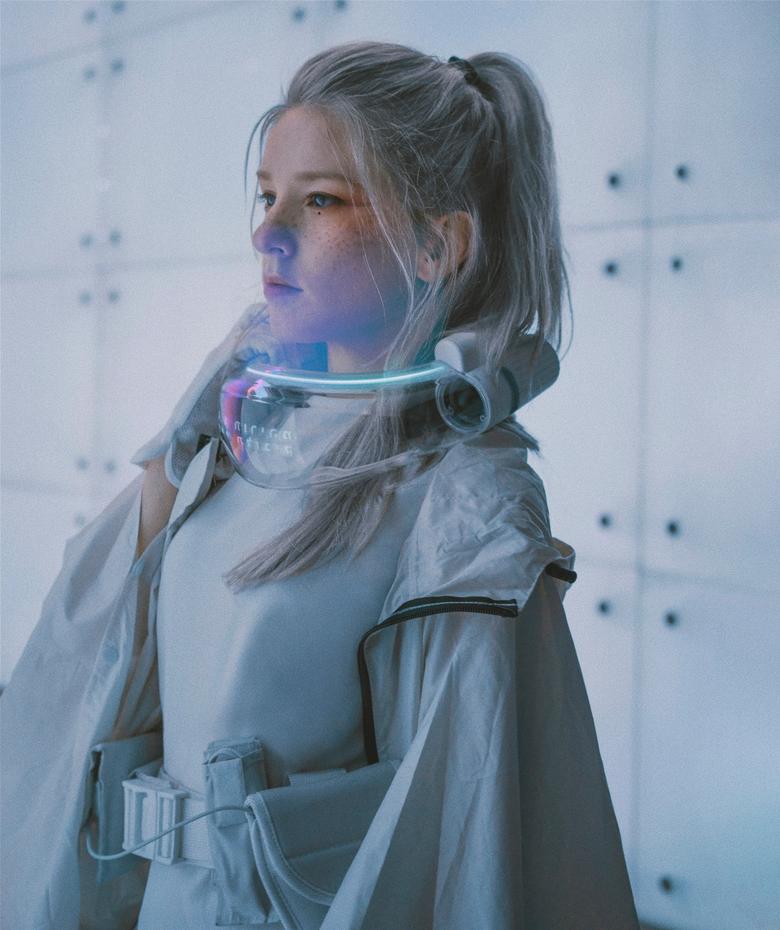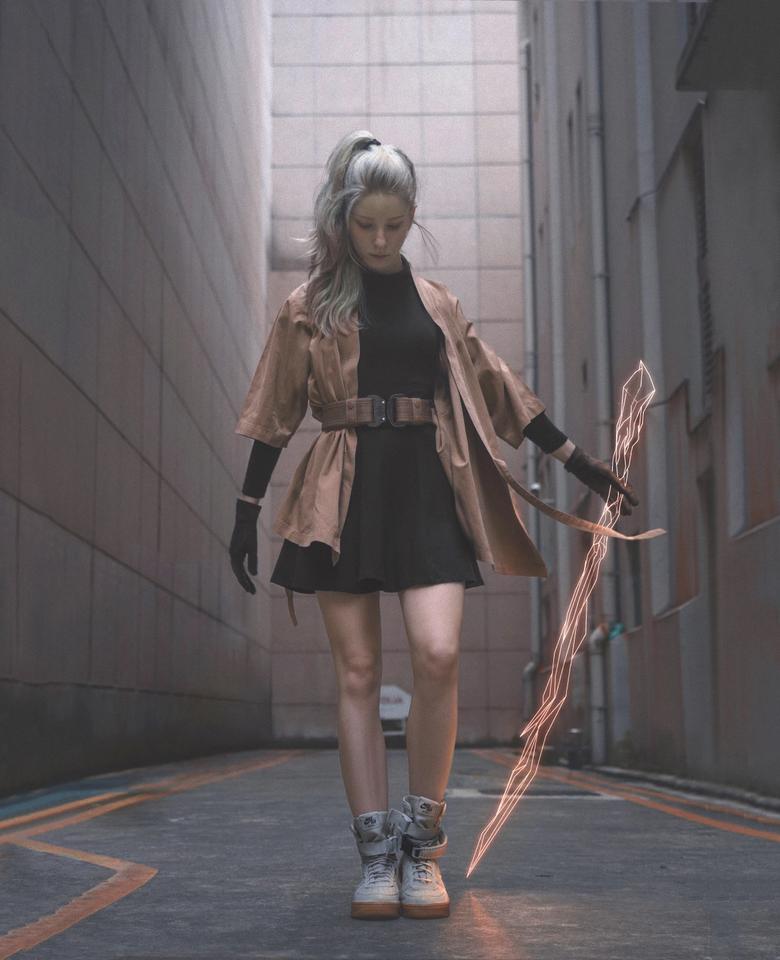Nina Geometrieva: Self-Taught Product Designer at Instagram
How she got her start in big tech without a formal education
Nina Geometrieva is a self-taught product designer, artist, and part-time cyborg. She’s currently working as a Product Design Lead at Instagram after working at Google for 5 years. From how she got into big tech after dropping out of college to her advice for aspiring product designers, read her story here.
1. How did you get your start in product design?
First, I got into graphic design so I could do posters for my band. I was so fascinated by the things one can do with color and shape, that I stopped attending my computer science studies to have more alone time with Photoshop. I don’t know what my end-game was, I don’t think I had one. I literally dropped out of college to draw shapes on a computer. Not my brightest moment.
Luckily life didn’t teach me any hard lessons because it all worked out fine; a few months in I got a job offer at a local startup. It was cheap money, but I was over the roof to officially call myself a visual designer.
I gradually got more exposed to product design after moving to Singapore and I admired product designers for being versed in both the creative and the analytical. I dabbled, but I didn’t get fully into it until a year or two before I got hired by Google.

2. How do you think being a self-taught designer has shaped your experience?
The good news is that none of my employers have ever asked me about school, my portfolio always does the job. The bad news is that all of the work visa requirements have asked me about school, and they never seem to care about how cool my portfolio is. There's a strange divide between these two worlds — companies love me, immigration laws hate me. Add a Macedonian tier passport into the mix, and moving to another country becomes impossible.
Everyone who knows me for longer than 2 seconds, knows I spent a decade trying to move to the US. One time a Design Manager asked me to join Microsoft Hololens while it was still an early concept but the next day went “nevermind” upon discussing my background with the immigration team. Or that other time I got a last-minute visa rejection to work for Soundcloud, and just 3 years ago yet another visa rejection for Google Search. In most of these cases I already had packed bags, a signed contract, a plane ticket in hand and yet it all came crumbling down at the last moment. Every single time it’s heartbreaking.
I have to admit though, at this point I’m operating a bit out of principle. A few years back I was offered a fully covered fast-track to a bachelor’s degree at a private design school in Singapore, and I said no. Being self-taught is now a part of my brand, and I’m damn proud of hustling and making it on my own. Oh, and spoiler alert - I finally moved to the US 2 months ago!!

3. What was your experience like working at Google?
My Google journey started 5 years ago in Singapore with a payment app called Tez, still under wraps when I joined. It became the #1 payment app in India and evolved into Google Pay. After Google Pay, I transferred to Google Maps in Tokyo, where I led some interesting efforts in the User Generated Content space.
Sometimes before I fall asleep I think about my first days at Google and I still chuckle. Googlers are an elite bunch — traveled, patent-holding over-achievers with impressive backgrounds. From ex Wall Street traders to Hardvard and Stanford summa cum laude (whatever that means) graduates and serial entrepreneurs.
And me? A lower class rando who thought school is stupid and learned design on an old pirated version of Photoshop out of a country that barely anyone knows. My only credentials were some people on the internet who said my graphics looked cool. To top it all off, I was hired as a “UX Designer” based on my experience as a Visual/Graphic Designer, which is a super different skill set. Naturally, I had no clue what I was doing at first and my impostor syndrome was running through the roof. As I got more confident in my skills over time, it thankfully faded away.
I feel like Google was my product design school in a way, and my recent start at Instagram has been very stress-free thanks to the lovely people at Google who helped me become a better designer throughout the years.
4. Why did you move from Google to Instagram?
A few of us at Google Pay were working on some exciting blockchain stuff back in 2017, but it wasn’t getting any leadership support because crypto was still super new. At the same time, Facebook jumped head first and was public about their crypto efforts, which I admired. A Facebook recruiter asked me to interview and I thought why not. Interviews went great, but they had no open roles in the crypto team so I didn’t proceed. The recruiter kept in touch, emailing every 6 months like clockwork.
Fast forward to 2021, it was time for my annual ceremony of attempting to move to the US. Right as I started looking for opportunities inside and outside of Google, a shiny new email by the Facebook recruiter landed in my inbox. I clapped my hands thinking just how perfect the timing was, because Instagram was absolutely at the top of my list of heavily design-oriented companies I’d love to join next.
For similar reasons, I was considering Apple and started interviewing in parallel. I think I was longing for an environment with a deeper appreciation for craft and user experience.
Apple is every designer’s fantasy, but Instagram felt particularly fresh during the interviews. With their shift to perma-wfh, it was a clear winner. After getting offers from both I went to binge-study the art of salary negotiation. Huge props to the anonymous community at Blind, to your comprehensive article that served as my salary negotiation bible and to all my friends in tech who shared crazy tips along the way. I eventually accepted the IG offer in NYC!
5. How would you compare working at a startup vs. a large public company?
Startups are wild. You’re constantly on a timer, VC funds running out, competitors catching up and large companies building an identical product to integrate into their thriving ecosystems. Some people embrace the chaos, and it really is a good way to build intuition, out-of-the-box thinking, and to become someone who gets shit done. FAST. It feels like learning to swim by being thrown in the sea. Highly recommend it to people who think skydiving is just too boring and need more excitement in life.
Larger companies are an entirely different beast. Steady process, reviews, documentation, more time to think things through and pay attention to detail. In this world, you navigate with persuasion, coordination, and a high level of scrutiny. It’s a great way to develop the mental training to always have crystal clear intentions behind your design work.
6. What is your inspiration for your Instagram account (@geometrieva)? Can you talk a bit more about your cyborg persona?

I love dark futuristic aesthetics and I love technology. Living in some of the most cyberpunk cities on the planet felt like a movie, and my husband and I wanted to document it all and tell surreal visual stories.
I genuinely hope to be a real cyborg one day. I’d merge with an AI, install a chip in my brain, you know that kind of stuff :) My IG is about imagining the normal everyday life of that cyborg version of me, like for e.g. the moments I run out of battery and have to charge in a parking lot. But it’s also about compositionally playing with lights and contrast and accents.

I’m also super into fashion, and it all started with a bizarre string of events while I lived in Singapore. I was getting a scan at the hospital (yay no cancer!) and they gave me one of those hospital robes to wear. The robe matched my military belt and pouch perfectly, so I took a selfie which went viral on Reddit. Local media talked about it, and the hospital reached out and sent me more gowns. I styled them, took more shots and my Instagram following took off.

Over time my account became less focused on fashion and more on ambience and stories, but it keeps on constantly evolving!

7. What advice would you give someone wanting to get started in product design?
Product Designers are the architects who imagine the digital world of tomorrow. They’re also the mediators between the world of machines and the world of people. Their superpowers are common sense, intuition and curiosity. Their tools are craft, data and insights.
Become one if:
- You see yourself spending a significant chunk of your time talking to people, presenting, aligning, convincing, negotiating.
- You like design, craft, pixels, beauty, design systems.
- You also like understanding people, oftentimes through numbers. People are complicated, but you will have the god-like privilege to observe the collective behaviors of millions and the power to directly influence their lives. No pressure.
8. What do you think are the most important factors in putting together a design portfolio?
A design portfolio is a window to your skills and personality, and a design project in itself. After reviewing many portfolios at Google, I came to realize that it's always the same few things that stand out in a good one.
- Balance between breadth and depth. Enough breadth to show a solid variety of work, problems, and skills. Enough depth to highlight your superpowers and tell a story about how you work.
- Good storytelling. Don’t talk about your design process, go tell a story about your personal experience in navigating the project instead. What challenges did YOU face, what did YOU learn. This helps to get to know you better. Make the story easy to follow and keep things interesting.
- Tell things as they are. An early pivot, a dead-end, an assumption proven wrong, limited time or resources. Don’t iron out these wrinkles, all of this can humanize your work and show you’re able to deal with adversity. There's an uncanny feeling when a portfolio project seems too perfect and following the textbook process to the letter - it instills doubt, like an overly airbrushed profile picture.
- Show successful outcomes. And not necessarily metrics. It could be a design system that enabled faster implementation, or a microinteraction that delighted users, or a set of guidelines that paved the way to efficient collaboration with cross-functional partners. Not all successes are obvious or even traditionally measurable.
9. What do you think are the most important qualities to thrive as a product designer?
Product designers operate across many extremes. One moment zooming into a minute UI detail, the next moment zooming out to a multi-year strategic vision. From analytical thinking to creative unconstrained ideation. From hard skills like craft to soft skills like leadership presentations.
Great product designers exhibit some CEO traits too, like turning ambiguous knowledge into well-defined opportunities. They are creative outside of the realm of design, and think deeper about the product ecosystem, consciously building principles and heuristics along the way.
Observing people and forming hypotheses around behaviors can also come in handy, both in your design career and at home. That’s what I love about product design — being good at it also helps you be better at life.
The information provided herein is for general informational purposes only and is not intended to provide tax, legal, or investment advice and should not be construed as an offer to sell, a solicitation of an offer to buy, or a recommendation of any security by Candor, its employees and affiliates, or any third-party. Any expressions of opinion or assumptions are for illustrative purposes only and are subject to change without notice. Past performance is not a guarantee of future results and the opinions presented herein should not be viewed as an indicator of future performance. Investing in securities involves risk. Loss of principal is possible.
Third-party data has been obtained from sources we believe to be reliable; however, its accuracy, completeness, or reliability cannot be guaranteed. Candor does not receive compensation to promote or discuss any particular Company; however, Candor, its employees and affiliates, and/or its clients may hold positions in securities of the Companies discussed.
